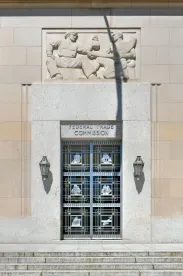On August 16, 2023, the Federal Trade Commission (“the FTC”) marked its first enforcement action of the prohibitions on interlocking directorates under Section 8 of the Clayton Act in over 40 years. Section 8 prohibits an officer or director of one firm from simultaneously serving as an officer or director of a competing firm under most circumstances.[1] The FTC accepted for public comment a consent order conditioning the 5.2 billion dollar cash‑and-stock deal between two rival natural gas producers on preventing “entanglements between the two companies and the exchange of confidential, competitively sensitive information.” Under the consent order, Quantum Energy Partners (“Quantum”) representatives may not serve on EQT Corporation’s (“EQT”) Board of Directors and must divest its EQT shares. The consent order also unwinds a pre-existing joint venture between the two entities and imposes additional restraints to protect competition.
The original deal, proposed by EQT in September 2022, offered Quantum up to 55 million shares of EQT stock and a seat on EQT’s Board of Directors in exchange for ownership of two companies owned by Quantum involved in producing, processing and transporting natural gas in the Appalachian Basin. The FTC alleged that the interlocking directorate coupled with Quantum’s significant shareholdings in EQT would have provided Quantum access to EQT’s confidential and competitively sensitive information and influence over EQT’s competitive actions or strategies, creating an unfair method of competition in violation of Section 5 of the FTC Act.[2] The FTC also alleged that a 2020 joint venture between the two companies harmed competition by requiring EQT to offer a right of first refusal to the joint venture over purchasing mineral rights within a specified geography, a condition that facilitated Quantum’s access to forward-looking and competitively sensitive, non-public information about EQT’s plans, strategies, and operations through the joint venture.
The law prohibiting interlocking directorates—Section 8 of the Clayton Act—is experiencing a revitalization under current antitrust enforcement leadership. The FTC’s proposed changes to the HSR Act form would require merging parties to identify all officers and directors (going back two years prior to filing) to allow the Agencies to identify existing, prior, or potential interlocking directorates and assess the competitive implications of such relationships. Similarly, the proposed Merger Guidelines issued earlier this month highlight the Agencies’ concerns surrounding acquisitions that could give investors an ownership interest in competing firms. According to the proposed Merger Guidelines, such acquisitions “may give the investor rights in the target firm, such as rights to appoint board members, observe board meetings, veto the firm’s ability to raise capital, or impact operational decisions, or access to competitively sensitive information.”[3]
The consent decree makes it clear that the appointment of any director designated by Quantum would be viewed by the FTC as Quantum’s agent and under its control, thus creating an illegal interlock between EQT and Quantum. This stance is consistent with the Agencies’ traditionally expansive view of Section 8.
What can companies do to prepare for the Agencies’ focus on Section 8 enforcement and avoid the exchange of competitive information through ongoing relationships?
- Companies contemplating mergers and acquisitions should carefully review and evaluate potential interlocking arrangements that may exist or may result from a transaction; frequent filers under the HSR Act should audit and maintain up‑to‑date records of representation on its boards, and designees to other corporations’ boards.
- Companies should consider updating compliance policies to address the potential for interlocking directorates.
- Companies engaged in joint ventures with competitors should ensure that adequate compliance policies and practices are in place to ameliorate concerns of competitive harm from the improper exchange of competitive information among joint venture partners.
Listen to this post
FOOTNOTES
[1] 15 U.S.C § 19.
[2] 15 U.S.C § 45.
[3] See Dep’t of Just. & Fed. Trade Comm’n., Draft Merger Guidelines (Jul. 19, 2023); see also our prior update on the new merger guidelines here.




 />i
/>i

